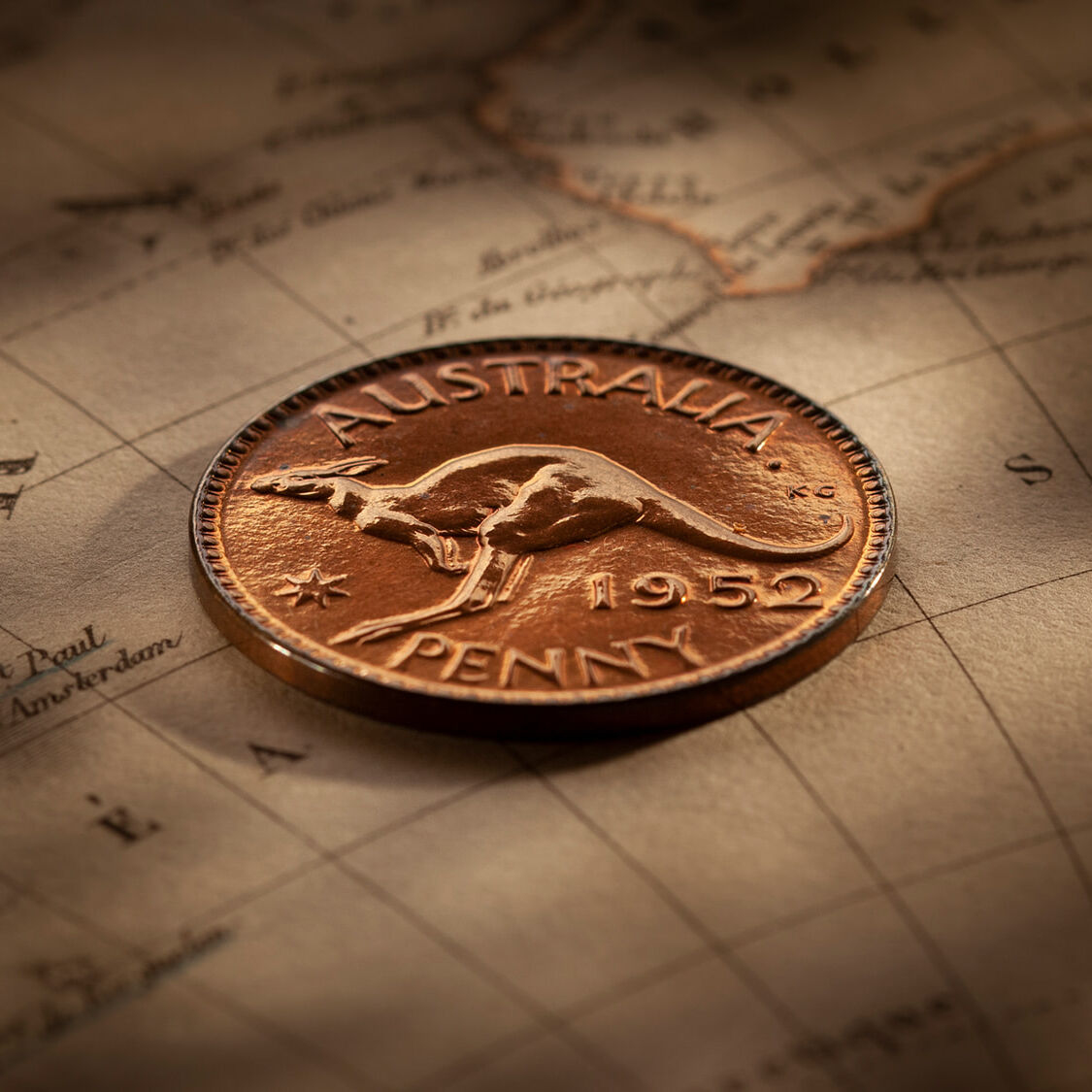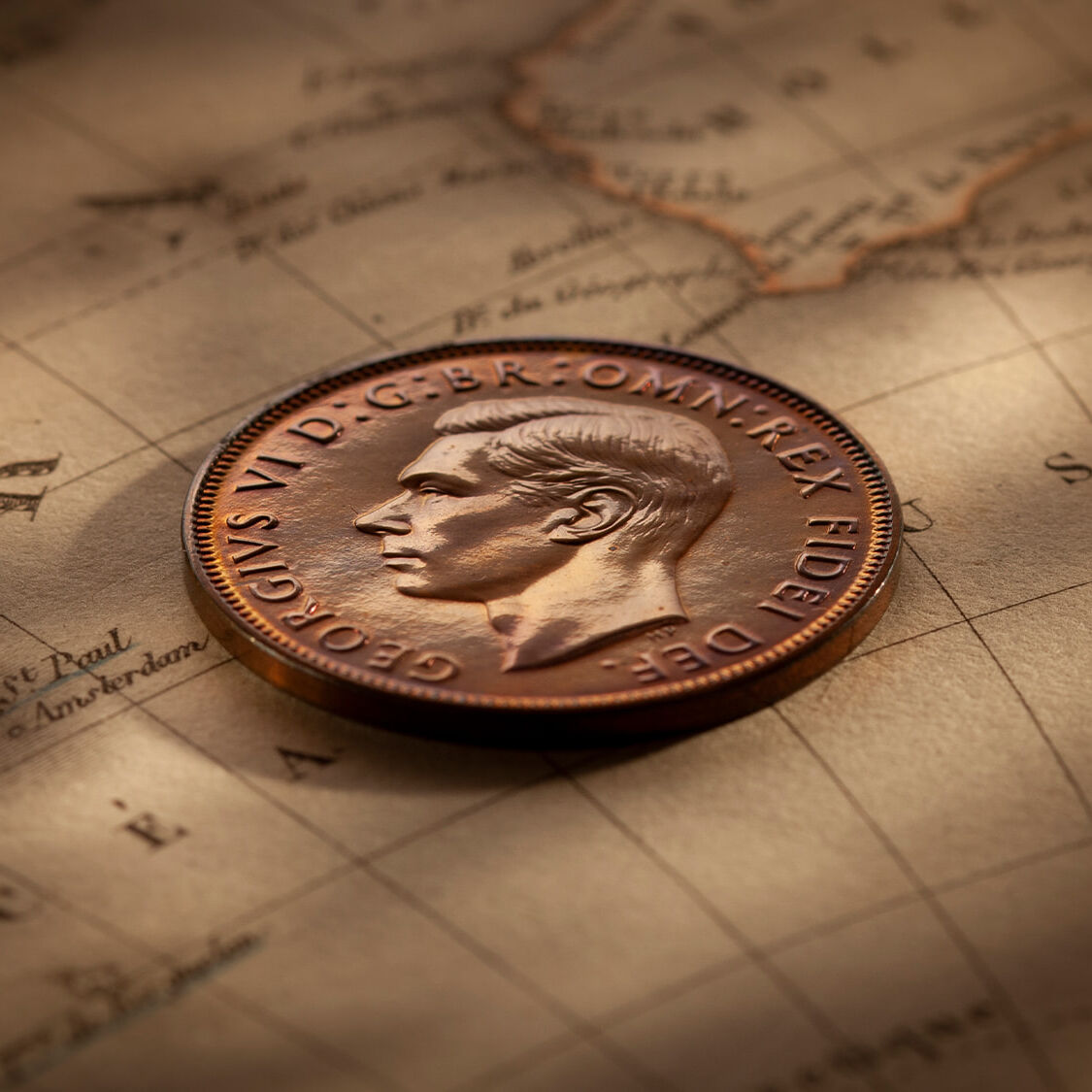Proof 1952 Penny struck as a Coin of Record at the Perth Mint


In an article published in the Journal of the Numismatic Association of Australia 2005, renowned numismatist Paul Holland contends that the Perth Mint proofs seemed to have been created for unaided vision, the point here being that a collector would not need an eye-glass to take in their beauty.
He also contends that the 1951-PL proofs from the Royal Mint London came to be viewed as the best possible model for what Perth Mint bronze proofs should look like for the PL copper proofs, as a general rule, are stunning. Visually impactful.
When you look at this Proof 1952 Penny you can't help but feel that Holland was spot-on with his assessment.
The rarity of the Proof 1952 Penny was confirmed in 1995 in an article published in the NAA journal (Volume 8) by John Sharples, the then Curator of Australia’s Numismatic Archives.
He examined the distribution of proof coins recorded in Perth Mint communications and records over the period 1940 – 1954.
He found evidence that fifteen proof pennies were struck at the Perth Mint in 1952.
He noted that two private collectors (most likely Syd Hagley and Ray Jewell) received examples of the pre-1955 proof coins, such was the influence of these collectors. The balance of the mintage, however, was destined for the mint's own archives with the majority sent to Public Collections and Numismatic Societies.
The official list authorised to receive Perth proofs were the Australian War Memorial, Royal Mint London, British Museum, Royal Mint Melbourne, Japan Mint, National Gallery SA, Art Gallery WA, National Gallery Victoria, Victorian Numismatic Society, South Australian Numismatic Society and the Australian Numismatic Society.
That the bulk of the mintage was gifted to institutions is the very reason why they are so rare in today's collector market.
We might sight a Proof 1952 Penny on the market every four to five years. And one as spectacular as this ... perhaps once in a decade, if we are lucky.
History of the Perth Mint
To facilitate the rapid conversion of gold into sovereigns and half sovereigns, the British Government authorised the establishment of the Sydney Mint in 1855 followed by the Melbourne Mint in 1872.
A gold rush, triggered in Western Australia following the discovery of vast gold fields in Coolgardie in 1892 and Kalgoorlie in 1893, convinced the British Government to authorise the opening of a mint in Perth.
The Perth Mint opened in 1899 and remained a gold producing mint from the year of its opening until 1931 when Australia struck its last sovereign and the coining presses at the Mint ground to a halt. The Perth Mint endured a nine-year period of nil coin production.
That the Melbourne Mint was striking Australia’s Commonwealth coins and that Australia was in the midst of a depression simply meant that the minting facilities at Perth were excess to requirements.
The onset of war created a window of opportunity and in 1940 the Perth Mint took up the reins for striking Australia’s circulating copper coins for the Commonwealth Government. The Perth Mint continued to strike copper coins until 1964, when two years later Australia converted to decimal currency.
In accordance with minting traditions the Perth Mint struck proof record pieces of those coins being struck for circulation. Referred to as Coins of Record.
Some of the pieces were archived. Some were gifted to prominent Australian and overseas institutions fulfilling the ideology of proofs being struck as display pieces.
There was no hint of commercialism in the production of these pieces. Posterity, the preservation of Australia’s coining heritage … that and a passion for numismatics were the driving forces behind their striking. The collector market was denied access to the coins.
© Copyright: Coinworks
